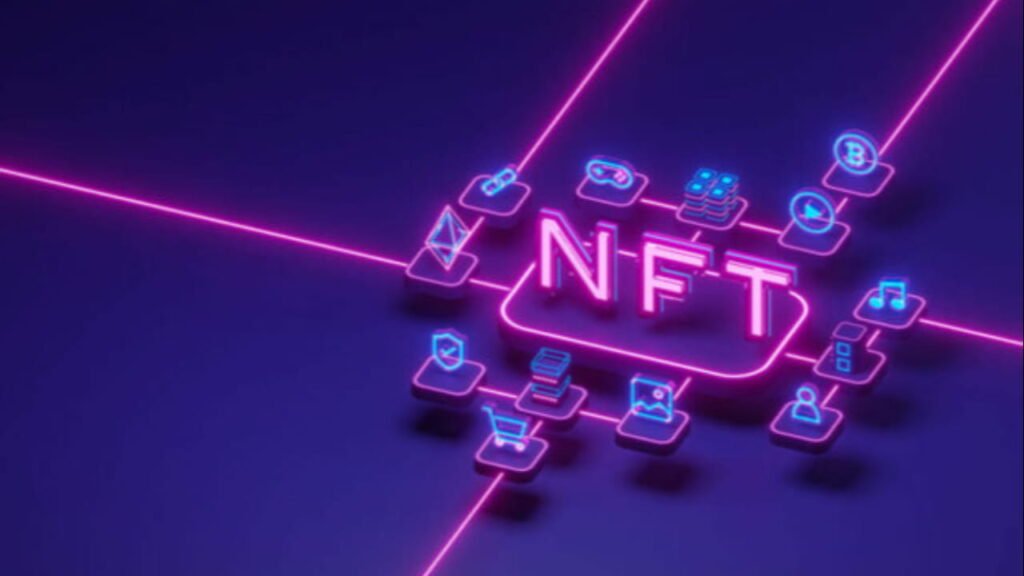The non-fungible token ecosystem has created unprecedented opportunities for artists, collectors, and investors alike. Ethereum, the pioneering blockchain platform for decentralised applications, hosts some of the most sophisticated and widely used NFT marketplaces available today. These platforms have become essential infrastructure for anyone looking to participate in the digital collectables market.
Navigating the landscape of Ethereum-based NFT platforms can be overwhelming, especially for newcomers who are just beginning their journey into digital asset ownership. Best Ethereum NFT Marketplaces: Each marketplace offers distinct features, fee structures, and community dynamics that can significantly impact your experience as either a creator or collector. Understanding these differences is crucial for making informed decisions about where to mint, buy, sell, or trade your digital assets.
This comprehensive guide explores the most prominent NFT trading platforms built on the Ethereum blockchain, examining their unique characteristics, advantages, and potential drawbacks. Whether you’re an established digital artist seeking the best venue to showcase your work, a collector hunting for rare pieces, or an investor looking to capitalise on emerging trends, this article will equip you with the knowledge needed to navigate the NFT marketplace ecosystem confidently. We’ll delve into platform features, security considerations, fee structures, and user experiences to help you identify the marketplace that best aligns with your specific needs and goals.
Ethereum NFT Marketplaces
Ethereum NFT marketplaces serve as digital venues where creators and collectors converge to exchange unique digital assets. Unlike traditional e-commerce platforms, these marketplaces operate on blockchain technology, ensuring transparency, immutability, and provable ownership of digital items. The Ethereum network, with its robust smart contract capabilities, has established itself as the preferred infrastructure for NFT transactions, supporting the majority of high-value digital art sales and collectable trades.
The fundamental appeal of blockchain-based marketplaces lies in their ability to establish verifiable scarcity and authentic ownership records. When you purchase an NFT on an Ethereum platform, the transaction is permanently recorded on the blockchain, creating an immutable proof of purchase that cannot be disputed or altered. This technological foundation has revolutionised digital ownership, enabling creators to monetise their work in ways that were previously impossible in the digital realm.
Different marketplaces cater to varying needs within the NFT community. Some platforms focus exclusively on curated digital art, maintaining strict quality standards and selection processes. Others embrace a more democratic approach, allowing anyone to mint and list their creations without gatekeepers. Understanding these philosophical and operational differences is essential for choosing a platform that resonates with your values and objectives. The smart contract infrastructure underlying these platforms also varies, affecting everything from royalty distributions to transaction speeds and gas fee optimisation.
OpenSea: The Industry Pioneer: Best Ethereum NFT Marketplaces
OpenSea has earned its reputation as the largest and most versatile NFT marketplace in the ecosystem. Since its launch, this platform has facilitated billions of dollars in transaction volume, establishing itself as the go-to destination for both newcomers and experienced collectors. The marketplace’s intuitive interface makes it remarkably accessible, even for those with limited blockchain experience, while still offering advanced features that appeal to sophisticated traders.
The platform supports an extraordinarily diverse range of digital assets, from digital artwork and photography to virtual real estate, domain names, and gaming items. This versatility has contributed significantly to OpenSea’s dominance, as users can explore multiple NFT categories without needing to navigate between different platforms. The marketplace operates on a straightforward fee structure, charging a service fee on successful sales while allowing creators to set their own royalty percentages for secondary market transactions.
One of OpenSea’s most significant advantages is its collection verification system, which helps users identify authentic projects and avoid counterfeit listings. The blue checkmark verification badge provides essential protection in an ecosystem where scams and copycat projects proliferate. Additionally, the platform has implemented various tools for collectors, including offer systems, bundle purchases, and advanced filtering options that streamline the discovery process. The recent implementation of optional creator fees represents a shift in platform philosophy, giving buyers more control over whether they honour artist royalties on secondary sales.
Community-Driven Innovation

Rarible distinguishes itself through its community-centric governance model, which empowers users to shape the platform’s evolution through the RARI token. This decentralised approach to platform development represents a significant departure from traditional marketplace structures, where operators make all strategic decisions unilaterally. Token holders can propose and vote on platform changes, creating a sense of shared ownership that resonates strongly with Web3 principles.
The marketplace has gained particular traction among creators who appreciate its artist-friendly features and flexible minting options. Rarible allows creators to launch their work using either gasless minting on Polygon or traditional Ethereum-based minting, providing flexibility based on budget considerations and strategic preferences. The platform’s creator tools are particularly robust, offering customizable royalty structures, unlockable content features, and the ability to create both single-edition pieces and limited edition collections.
Rarible’s aggregation features represent another compelling aspect of the platform. Users can browse listings from multiple marketplaces simultaneously, including OpenSea and other major platforms, all within Rarible’s interface. This cross-platform functionality saves time and provides comprehensive market visibility, helping collectors identify the best deals across the ecosystem. The platform’s emphasis on social features, including follower systems and activity feeds, creates a more engaging community experience compared to purely transactional marketplaces.
Foundation: Premium Art Focus
Foundation has carved out a distinctive niche by positioning itself as a curated digital art platform that emphasises quality over quantity. The marketplace operates on an invitation-based model where new creators must be invited by existing community members, creating an exclusive atmosphere that appeals to serious artists and collectors. This gatekeeping approach, while controversial in some circles, has helped maintain consistently high artistic standards across the platform.
The platform’s auction-based sales model creates an engaging acquisition experience that differs substantially from fixed-price marketplaces. When a creator lists a piece on Foundation, it enters a reserve auction format where collectors can place bids, with the auction concluding after a predetermined period or when the reserve price is met. This system generates excitement and competition around desirable pieces, often driving prices higher than they might achieve through traditional listings.
Foundation’s collector community tends to be well-established and financially capable, making it an attractive destination for artists seeking serious patronage. The platform has facilitated some of the most significant digital art sales in NFT history, including works by prominent contemporary artists who have embraced blockchain technology. The social dynamics on Foundation also differ from larger marketplaces, with a stronger emphasis on artist-collector relationships and community support. However, the exclusivity that makes Foundation appealing to some can also be a barrier for emerging artists without existing connections in the NFT space.
LooksRare: Incentivised Trading
LooksRare emerged as a direct competitor to OpenSea, implementing an aggressive reward structure designed to attract users through financial incentives. The platform distributes its native LOOKS token to users who list, buy, and sell NFTs, creating a gamified experience that encourages active participation. This approach sparked considerable controversy and debate about whether incentivised trading benefits the ecosystem or artificially inflates volume metrics.
The marketplace’s technical infrastructure provides a streamlined trading experience with competitive fee structures. LooksRare charges a flat platform fee on sales, which is notably lower than some competitors, making it attractive for high-volume traders concerned about fee accumulation. The platform also implemented instant royalty payouts to creators, ensuring artists receive their secondary sale percentages immediately rather than waiting for delayed distributions.
However, the token reward system has created complex dynamics within the LooksRare ecosystem. While trading rewards successfully attracted significant volume, questions emerged about the quality and authenticity of that activity. Some analysts suggested that wash trading—where users trade assets between their own wallets to farm rewards—inflated the platform’s apparent success metrics. The long-term sustainability of incentivised trading models remains an open question as the novelty of token rewards diminishes and market conditions evolve.
SuperRare: Gallery Experience
SuperRare positions itself as the digital art gallery of the NFT world, emphasising curation, quality, and the presentation of individual artworks as serious artistic statements. The platform maintains stringent acceptance criteria for artists, resulting in a collection that showcases exceptional technical skill and creative vision. This selective approach creates a prestige factor that benefits both artists and collectors seeking investment-grade digital art.
The platform’s single-edition focus represents a deliberate philosophical choice that emphasises scarcity and uniqueness. Unlike marketplaces where artists can mint unlimited editions or large collections, SuperRare restricts creators to one-of-one pieces, reinforcing the concept of digital art as rare and valuable. This constraint encourages artists to present their strongest work and creates a collecting experience more aligned with traditional fine art markets.
SuperRare’s collector community consists of serious art enthusiasts and investors who appreciate the platform’s commitment to quality. The marketplace facilitates social interaction through commenting systems, exhibition features, and editorial content that contextualises featured artworks. The platform also hosts virtual exhibitions and events that showcase specific artists or themes, creating cultural moments that transcend simple transactions. For artists accepted into the SuperRare ecosystem, the platform provides not just a sales venue but also curatorial support and promotional opportunities that can significantly elevate their careers.
Security Considerations
Security represents a paramount concern when engaging with NFT marketplaces, as the irreversible nature of blockchain transactions means mistakes or fraud can result in permanent losses. The Ethereum ecosystem faces ongoing challenges from scammers who employ increasingly sophisticated techniques to deceive users and steal valuable assets. Understanding common attack vectors and implementing robust security practices is essential for anyone participating in the NFT market.
Phishing attacks remain one of the most prevalent threats, with malicious actors creating fake marketplace websites or sending fraudulent messages that appear to come from legitimate platforms. These schemes typically request that users connect their wallets or sign transactions that unknowingly grant attackers access to their assets. The wallet security measures you implement, including using hardware wallets for significant holdings and never sharing seed phrases, form your first line of defence against these threats.
Smart contract vulnerabilities present another significant risk category. While major marketplaces invest heavily in security audits and best practices, the complexity of blockchain technology means exploits occasionally emerge. The most secure approach involves using established platforms with proven track records, enabling two-factor authentication wherever available, and exercising caution with newly launched marketplaces that haven’t been thoroughly tested. Additionally, understanding the distinction between token approvals and transfers helps users recognise when they’re granting permissions that could be exploited later.
Fee Structures and Economics
The transaction costs associated with NFT marketplaces significantly impact profitability for both creators and traders. Ethereum’s gas fees fluctuate based on network congestion, sometimes reaching prohibitively expensive levels during peak usage periods. These fees apply to various actions, including minting new NFTs, listing items for sale, accepting offers, and transferring assets between wallets. Understanding when and how to optimise transaction timing can result in substantial savings.
Platform fees represent another cost consideration, with different marketplaces implementing varying models. Most platforms charge a percentage of the sale price as a service fee, typically ranging from 2.5% to 5%. Some marketplaces also charge listing fees or require deposits, while others operate on a free-listing model where fees only apply to completed sales. Best Ethereum NFT Marketplaces: The royalty systems that compensate original creators on secondary sales add another layer to the fee structure, Best Ethereum NFT Marketplaces: though recent changes have made these payments optional on some platforms.
Strategic timing and platform selection can significantly optimise your economic outcomes in the NFT market. Minting during off-peak hours when gas prices drop, using Layer 2 solutions like Polygon for lower-value items, and comparing effective costs across different marketplaces all contribute to better financial results. For creators, understanding how platform fees and royalties compound over time helps in pricing strategies and platform selection. Best Ethereum NFT Marketplaces: Collectors benefit from calculating total acquisition costs, including both the purchase price and associated fees, Best Ethereum NFT Marketplaces: when evaluating investment opportunities.
Making Your Platform Choice
Selecting the right NFT platform depends on numerous factors specific to your situation, Best Ethereum NFT Marketplaces: goals, and preferences. Best Ethereum NFT Marketplaces: Artists must consider the type of work they create, their existing reputation, and their target audience when choosing where to establish their presence. Best Ethereum NFT Marketplaces: A digital artist creating unique one-of-one pieces might find SuperRare or Foundation more aligned with their vision, while someone producing larger collections or more accessible work might prefer OpenSea’s broader reach.
Collectors face different considerations, including the types of NFTs they’re interested in acquiring, their budget constraints, and their preferred user experience. Best Ethereum NFT Marketplaces: Someone focused on emerging artists might gravitate toward platforms with strong discovery features and community engagement, while serious art collectors might prioritise curated marketplaces with stringent quality standards. Best Ethereum NFT Marketplaces: The trading interface, available tools for portfolio management, and platform reputation all influence the collecting experience.
Many successful NFT participants maintain a presence across multiple platforms rather than committing exclusively to a single marketplace. Best Ethereum NFT Marketplaces: This diversified approach maximises exposure for creators, allowing them to reach different audience segments and experiment with various presentation formats. For collectors, multi-platform engagement enables comprehensive market coverage, ensuring they don’t miss important releases or favourable pricing opportunities. Best Ethereum NFT Marketplaces: The interconnected nature of the Ethereum ecosystem makes cross-platform participation relatively seamless, as most marketplaces interact with standard wallet infrastructure.
Conclusion
The Ethereum NFT marketplace landscape offers diverse options tailored to different needs, preferences, and participation styles. Best Ethereum NFT Marketplaces: From OpenSea’s comprehensive marketplace serving all user types to Foundation’s exclusive artist community and SuperRare’s gallery approach, each platform provides unique value propositions within the broader ecosystem. Best Ethereum NFT Marketplaces: Understanding these distinctions empowers you to make informed decisions about where to invest your time, creative energy, and financial resources.
The continued evolution of NFT platforms reflects the dynamic nature of blockchain technology and digital culture. Best Ethereum NFT Marketplaces: New marketplaces regularly emerge with innovative features, while established platforms continuously adapt to user feedback and market conditions. Best Ethereum NFT Marketplaces: Success in this space requires staying informed about platform developments, maintaining robust security practices, and engaging authentically with communities that align with your values and interests.
Whether you’re launching your career as a digital creator, building a valuable NFT collection, Best Ethereum NFT Marketplaces: or exploring investment opportunities in digital assets, Best Ethereum NFT Marketplaces: the right marketplace selection significantly influences your experience and outcomes. Best Ethereum NFT Marketplaces: By carefully evaluating platform features, community dynamics, fee structures, and security measures, you can position yourself for success in the exciting and rapidly evolving world of Ethereum-based NFT marketplaces.
FAQs
Q: What is the best Ethereum NFT marketplace for beginners?
OpenSea represents the most beginner-friendly option due to its intuitive interface, comprehensive educational resources, and support for diverse asset types. Best Ethereum NFT Marketplaces: The platform’s large user base means more liquidity and trading activity, Best Ethereum NFT Marketplaces: making it easier to buy and sell NFTs. New users benefit from OpenSea’s straightforward listing process and extensive help documentation that explains blockchain concepts and marketplace mechanics.
Q: How much do NFT marketplace fees typically cost?
Platform fees generally range from 2.5% to 5% of the sale price, though structures vary by marketplace. Additionally, Ethereum gas fees fluctuate based on network congestion, Best Ethereum NFT Marketplaces: potentially ranging from a few dollars to over $100 during peak periods. Best Ethereum NFT Marketplaces: Creator royalties, typically 5% to 10%, apply to secondary sales on many platforms.
Q: Are NFT marketplaces secure?
Reputable established marketplaces like OpenSea, Rarible, and Foundation implement robust security measures, including smart contract audits and verification systems. However, no platform is completely immune to risks. User security practices, including using hardware wallets, enabling two-factor authentication, and verifying website URLs, are essential.
Q: Can I sell the same NFT on multiple marketplaces?
Technically, you can list the same NFT on multiple platforms simultaneously since most marketplaces don’t take custody of your assets until sale completion. Best Ethereum NFT Marketplaces: However, this practice requires careful management to avoid double-selling, which could damage your reputation and potentially create legal issues. Many sellers prefer exclusive listings or remove items from other platforms once listed elsewhere to maintain clarity and professionalism in their dealings.
Q: Do I need cryptocurrency to buy NFTs on Ethereum marketplaces?
Yes, purchasing NFTs on Ethereum-based marketplaces requires cryptocurrency, specifically Ether (ETH), which is the native token of the Ethereum blockchain. Best Ethereum NFT Marketplaces: You’ll need to acquire ETH through a cryptocurrency exchange, transfer it to a compatible wallet like MetaMask, and then connect that wallet to your chosen marketplace.


